Growing Okra In Pots / Containers / Backyard
The following information is bout Growing Okra vegetable in Containers/Pots/Terrace/Backyards.
Introduction to Growing Okra (Ladies finger)
Okra is a green vegetable flowering plant grown for its edible green pods in tropical, sub-tropical and warm temperate regions of the world. Okra is also known as “Ladies finger” in many Asian countries. Okra is native to South Asian countries. The Okra plant is a perennial and grown as an annual in temperate climatic regions of the world. Usually, Okra plants grow about 3 to 6 feet tall depending on variety. Okra is long, has slender shape. The okra vegetable is about 3 to 5-inch length and contains a number of seeds in it. Okra is s self-pollinating plant which can produce both male and female flowers. Okra is a commercially valued crop, especially in India. Let us discuss about growing okra in containers or pots and backyard garden.
Top 10 Okra Producing Countries
- India.
- Nigeria.
- Sudan.
- Cote d’Ivoire.
- Iraq.
- Pakistan.
- Cameroon.
- Ghana.
- Egypt.
- Benin.
Scientific name of Okra
- Abelmoschus esculentus.
Common names of Okra
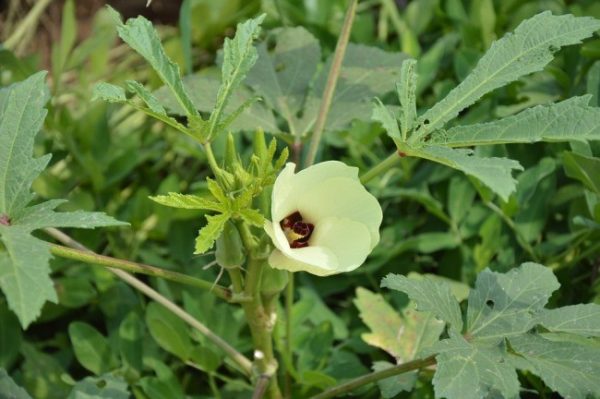
- Okra.
- Ladies finger.
- Ochro.
- Bhendi.
- Okro.
Okra varieties for Growing Okra in Pots/Containers/Backyard
There are many varieties available throughout the world, however, here are some popular varieties of okra.
- Annie Oakley.
- Emerald.
- Star of David.
- Park’s Candelabra Branching.
- Louisiana Green Velvet.
- Red Burgundy Okra.
- Clemson Spineless Okra.
- Cow Horn Okra.
- Jade Okra.
- Jing Orange Okra.
- Perkins Dwarf Okra.
- Perkins Long Pod.
Where can we grow Okra?
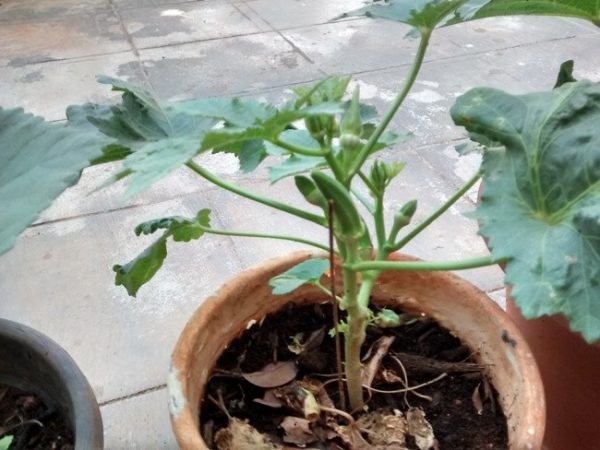
- Indoors (Containers, pots, backyards, terrace).
- polyhouse.
- greenhouse.
When to plant Okra or Planting season for Growing Okra in Pots/Containers/Backyard
- The best time to sow the okra seeds is 15 days after final frost of the season and when the soil started warming up. For better germination of okra seeds, ensure soil temperature of 25°C. Okra plants love the heat and humid conditions. Don’t plant Okra where the night temperatures fall below 16°C.
How to sow Okra seeds for Growing Okra in Pots/Containers/Backyard
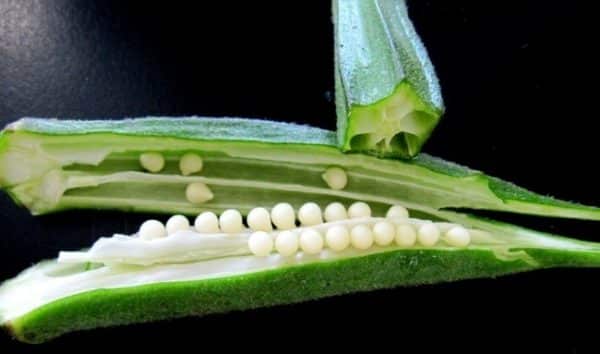
- Select a site or spot in your garden where there would be plenty of sunlight for direct sowing.
- If you are planting in pots or containers, these should be placed in an area where at least 6 hours of sunlight is expected.
- Okra seeds should be treated with fresh warm water overnight (12 to 18 hours) the day before the sowing in container or garden.
- The other thing you should think of is garden soil. If it is fertile, that would be great, otherwise, it needs enrichment. in poor soils, you can supplement the soil or garden bed with organic compost or fertilizer 10-10-10 or slow release fertilizer like 4-6-6. The application rate and time you can find on the package.
- In case of growing okra in the container, you can get the potting mix which is very well suited. Choose the container size depending on variety. Dwarf Okra variety is best for pot growing. The selected container should have a hole underneath for well-drainage and aeration.
- Okra is best grown between temperatures of 20°C and 30°C. More pods are developed as temperature increases.
- Okra plant thrives best with a soil pH between 6.5 and 7.0. However, it can do well do up to 7.4 pH level. You can do a soil test with pH meter available in most of the garden centers.
- It is better to for direct seed sowing in the garden or container as seedling transplantation is risky due fragile roots of Okra plant.
- You should sow Okra seeds into raised mounds spaced 1 feet to 2 feet apart with 3 feet between each row to allow more room for growth. It is advised to make rows facing east-west direction to receive more sunlight. It is recommended to plant 1 to 1 1/2 inch deep with 3 to 4 seeds in each hole. Later you can keep one healthy growing plant.
- In case of container growing of okra, you can sow 2 to 3 seeds at the center and keep the only healthy plant.
- Usually, it takes about 4 to 12 days for germination of Okra seeds.
- Once the Okra seeds are sprouted and grown for a couple of inches, leave the tallest plant and prune all other plants in the mound.
- Avoid water stress, always make sure the soil is moist enough for healthy growth. You can water Okra plants when you find the soil started loosening moister (becoming dry). In container growing, avoid too much watering as there is not enough space in the bottom to drain out.
- You can expect slow growth initially however as summer temperatures rise, you can observe the faster growth of Okra plants.
Okra plant care for Growing Okra in Pots/Containers/Backyard
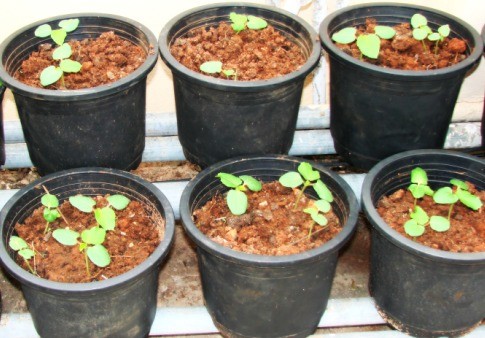
- If Okra planting is done in your backyard garden, you can expect weeds competing with your okra plants. To control the weed growth, you should mulch the okra plants to conserve the soil moisture and check the weeds. The mulch marital-like dry grass or any husk will work fine. Another advantage of mulch is that the material used will decompose after some time and work as organic compost. In pots or containers, it is easy to remove by hand as the weeds emerge.
- For better growth and quality of produce, you can apply fertilizers at the sides of mounds. Side-dressing the plants with a fertilizer 10-10-10, good garden compost is recommended. This amount application would be 225 grams/25 feet of each row.
- You can thin the okra seedling when they are about 8 cm tall. This can make to maintain 30 to 40 cm apart of seedlings.
- In dry and hot climates, water regularly and after the first harvest, though they are drought resistant compared to other vegetables. They require at least 1 inch watering per week. You should pinch/remove the lower leaves of Okra plant speed the production of Okra.
Pests and Diseases in Growing Okra in Pots/Containers/Backyard
- Root-knot nematode.
- Ants and Fireants.
- Japanese beetles.
- Stem blight
- Stink bugs.
- Aphids.
- Corn earworms.
- Flea beetles.
- Soil-borne diseases like verticillium and fusarium wilts (cold climate causes this).
How to Control Pests and Diseases in Growing Okra in Pots/Containers/Backyard
Well, it is recommended to monitor okra plants for any infestation.
- Avoid wetting the leaves of your okra plants, don’t use sprinkler system in case of large area, go for drip system watering. Sprinkling the water wetting the leaves can cause fungal diseases.
- You can treat any serious infestation with available appropriate organic pesticides labeled safe for garden use.
- Make sure to keep sharp pruning shears clean after every use.
- If you are going in larger areas, crop rotation and good soil management help control diseases
When to Harvest Okra in Growing Okra in Pots/Containers/Backyard
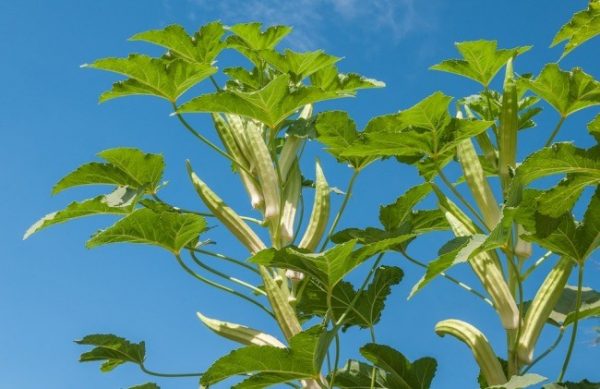
- Generally, it takes about 2 months after planting in your garden. You can pick okra with a sharp knife and don’t forget to use gloves while harvesting. Try to pick the young okra pods when they are about 3 to 4 inches long and avoid pods to fully mature on plants unless you are growing for seed purpose. It is recommended to harvest every day.
- Okra grows very fast, if you don’t pick for 2 or 3 days, they will be fully matured. If you are just planning for family purpose 5 to 5 okra plants are enough to fulfill your needs.
- Okra plants can produce pods for 2 to 3 months. Usually, okra plants grow and bear seed pods until frost.
How to Store Okra vegetable
Well, freshly harvested okra pods can be put in freezer bags before storing in the refrigerator.
Okra companion plants for Growing Okra in Pots/Containers/Backyard
Well, okra can be grown nearby or along with the following plants.
- Melons.
- Cucumbers.
- Sweet peppers.
- Eggplants.
- Sunflowers.
- Lettuce.
Bottom Line of Growing Okra in Pots/Containers/Backyard
Growing okra (Lady’s finger) vegetable in indoors is fun and healthy!.
